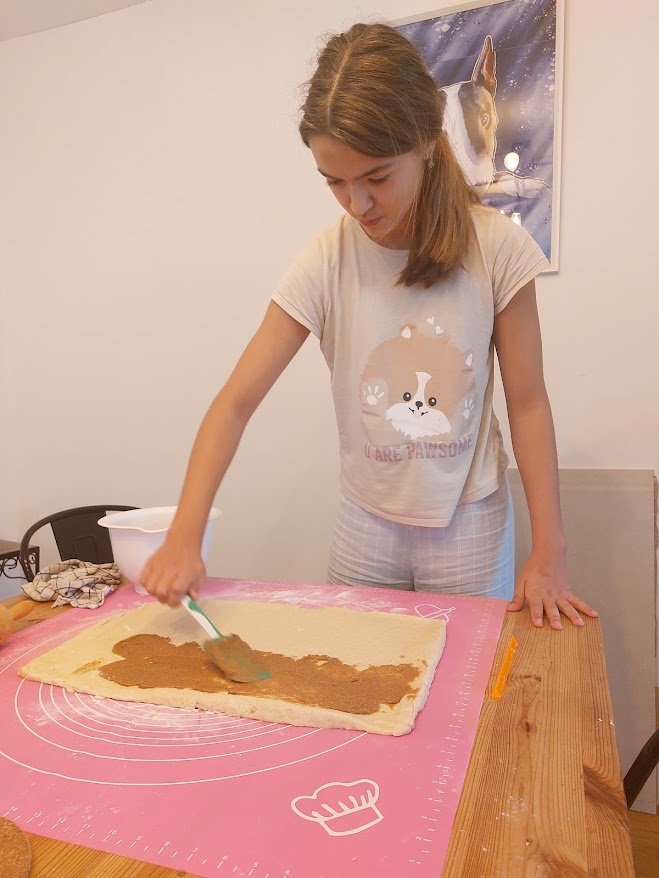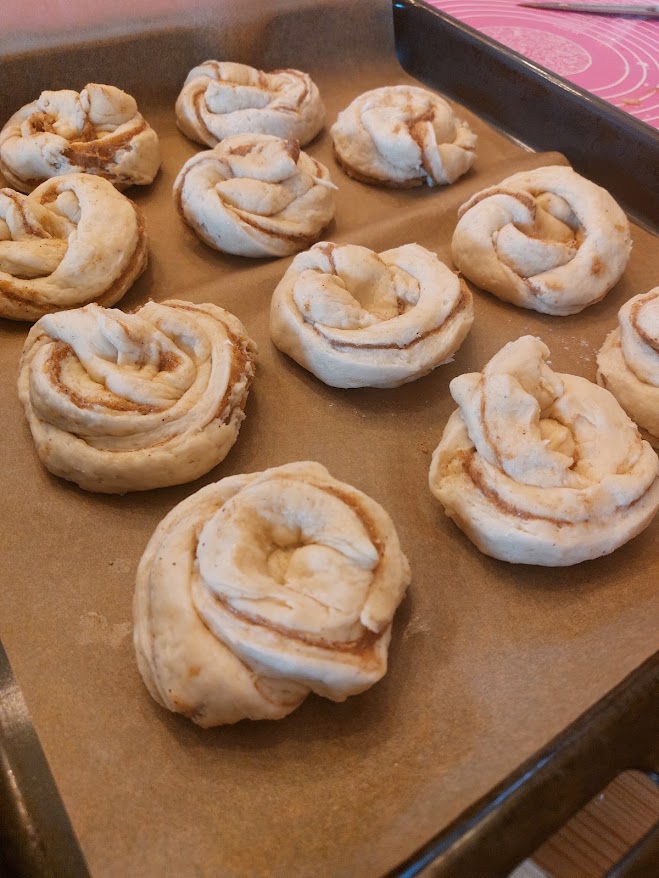Blog

Kanelbullens Dag: A Sweet Swedish Tradition and the Science of Cinnamon
- Keywords
- Kanelbullens dag
- Swedish cinnamon buns
- Kanelbullar recipe
- Cinnamon bun day Sweden
- How to make kanelbullar
- Family baking traditions
- Science of cinnamon
- Baking with kids
- Swedish fika culture
- Easy cinnamon bun recipe
At Science Market Uppsala, we believe that the best learning happens when we do things together — especially when those things are warm, delicious, and filled with cinnamon!
Every year on October 4th, Sweden celebrates Kanelbullens dag, or Cinnamon Bun Day. It’s a day when homes and bakeries fill with the scent of freshly baked buns, and families gather around the kitchen table to roll, brush, sprinkle, and bake.
And for me, Kanelbullens dag is my favorite Swedish tradition. It’s cozy, joyful, and filled with the kind of moments that matter—shared laughter, sticky fingers, and the smell of cinnamon drifting through the house.

The Science of Cinnamon
Cinnamon is more than a spice—it’s a story. It comes from the bark of a tropical tree, and when peeled, it curls into rolls. Ground into powder, it becomes the fragrant ingredient we use in baking.
Historically, cinnamon was used in China and Egypt as early as the 3rd century BCE to preserve food. It was also a natural remedy for bronchitis and low mood. By the 17th century, it was one of Europe’s most traded spices.
Today, it’s a staple in kitchens—and the star of Sweden’s beloved kanelbulle.
How to Make Swedish Cinnamon Buns (Kanelbullar Recipe)
Makes about 20 buns
Ingredients for Traditional Kanelbullar
Dough:
- 1 packet dry yeast (7 g)
- 50 g butter
- 300 ml milk
- 50 g sugar
- 1 pinch of salt
- 800 g all-purpose flour
Filling:
- 50 g butter
- 2 tsp ground cinnamon
- 50 g sugar
Topping:
- 1 egg yolk
- Pearl sugar
Tools:
- Mixing bowl
- Rolling pin
- Knife
- Baking tray with parchment paper
- Small bowl
- Pastry brush
Step-by-Step Instructions for Swedish Cinnamon Buns
- Mix dry ingredients
In a large bowl, combine flour, yeast, salt, and sugar. - Melt the butter
Melt 50 g butter in the microwave (30 seconds) or on the stove. Be careful—it gets hot! - Warm the milk
Heat milk to about 37°C. Test with your finger—it should feel gently warm.
Tip: Ask an adult for help with heating if needed. - Make the dough
Add warm milk and melted butter to the bowl. Knead for 10 minutes until smooth and elastic. - Let the dough rise
Cover with a towel and let rise for 35–45 minutes. - Divide and roll
Split the dough in two. Roll each half into a rectangle about half a finger thick. - Add the filling
Spread thin slices of butter, sprinkle sugar and cinnamon evenly. - Roll and slice
Roll into a log and slice into 2 cm rounds. - Repeat
Do the same with the second half of the dough. - Prepare for baking
Place buns on a tray, spiral side up. Press gently and leave space between them. - Brush and decorate
Brush with egg yolk, sprinkle pearl sugar, and let rest for 20 minutes. - Bake
Bake at 220°C for 8–10 minutes until golden. Enjoy the cinnamon-scented magic!

Baking Tips for Beginners
- Use room temperature ingredients for better dough texture.
- Don’t overheat the milk — too hot and it can kill the yeast.
- Kneading is key! It helps develop gluten, making buns soft and chewy.
- Let the dough rise in a warm spot — near a window or oven (turned off).
- Use a timer so you don’t overbake. Golden is good, brown is too far!
- Bake with kids — let them brush the buns or sprinkle sugar. It’s a great sensory and bonding activity.
Why This Matters as a Family Tradition
At Science Market Uppsala, we encourage families to turn Kanelbullens dag into a yearly ritual. It’s not just about baking—it’s about slowing down, connecting, and learning together.
When children help measure ingredients, knead dough, or brush buns, they’re not just making food—they’re building confidence, curiosity, and memories. Repeating this tradition every year creates a rhythm of togetherness, a moment to look forward to, and a chance to talk about science, culture, and kindness.
So this October 4th, gather your family, warm up the oven, and let the scent of cinnamon fill your home—and your hearts.
